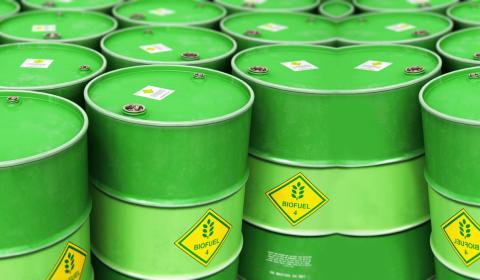
Biofuels: ensuring compliance with RED II
Companies are increasingly turning their attention to all things “bio,” moving toward carbon neutrality in response to the accelerating energy transition. Bioenergy, biofuels and biomass are on everyone’s lips as solutions that, when renewably sourced from end to end, offer companies sustainable, low-carbon energy. However, a multitude of terminology and increasingly stringent regulations mean that companies looking to adopt this solution could benefit from expert guidance.
What does it all mean?
Bioenergy is energy derived from organic materials; it can provide direct heat and electricity and be stored and transported in the form of fuels. Biofuels are produced from biomass through contemporary processes, as opposed to the slow geological processes required for the formation of fossil fuels such as oil. Since biomass can actually be used as a fuel directly, the terms biomass and biofuel are often used interchangeably.
A sector under scrutiny
Europe aims to become the world’s first climate-neutral continent by 2050. Its use of renewable energy more than doubled between 2004 and 2019, and demand continues to grow. Biofuels have a key role to play. The International Energy Agency believes that by the end of 2021, the biofuels market will have recovered from its COVID-related dip. At that point, it should have reached 2019 production levels as transportation activity slowly resumes and biofuel blending rates increase. However, as uptake of biofuels grows, companies will find themselves under growing scrutiny to comply with new directives, such as RED II.
What is RED II?
RED is the European Union’s Renewable Energy Directive, which first came into force in 2009. It established sustainability criteria for biofuels, biomass fuels including renewable fuels of non-biological origin, and recycled carbon fuels. RED II came into force on July 1, 2021. It introduced extra criteria regarding, for example, sustainability for forestry feedstocks and greenhouse gas (GHG) emissions for solid and gaseous biomass fuels. It also defined a series of sustainability and GHG emission criteria for bioliquids used in transport. Several voluntary programs exist to help companies ensure full compliance.
Who is concerned and what will change?
RED II impacts a number of companies. Among agricultural and forestry feedstock and crop residue players, it mainly affects first gathering points, processing units, traders and storage companies. In terms of waste and processing residues, those impacted are collection points, processing units, traders and storage companies.
Overall, processors are the most affected by RED II’s updates. One of the most significant changes is the introduction of a new fossil reference value for GHGs, which means that processing units must change their calculations. For agricultural and forest biomass, RED II updates include the introduction of new land categories and requirements for sustainable harvesting of forest biomass. Waste and residues players are also facing changes, such as the introduction of mandatory surveillance audits after their first certification.
Bureau Veritas: qualified third-party certificatioN
Bureau Veritas supports organizations in proving the green credentials of their bioenergy, enabling them to demonstrate their commitment to sustainable solutions. Drawing on over 15 years’ experience, we are leaders in certifications based on social responsibility and reporting verification of emissions. Our global network of auditors across 140 countries are accredited to carry out ISCC EU, ISCC PLUS and CORSIA, REDcert EU, SURE and REDcert2 audits.
Webinar: RED II - What the latest EU directive means for sustainable biofuels and bioenergy certification?
Biomass and Biofuels sustainability Service Sheet